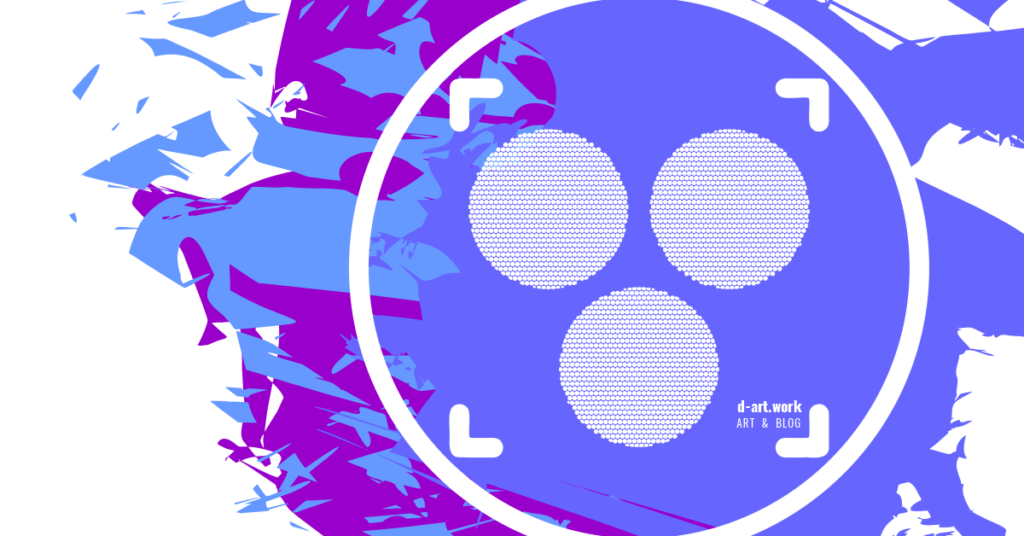This is an article with all the basics about color, how it naturally forms in our environment, how we process it through our eyes, and how we transport and convert it to the world of graphics, visual arts and printing. Mastery of color is fundamental to a good end product.
Color Process
The reader will be aware that color is derived from light. Our planet is illuminated by the sun through the light waves it emits. These waves differ in length, which gives rise to the different colors, which seen together form the color white. The popular phenomenon demonstrating this reality is the formation of rainbows on rainy days, because water represents a medium with a different optical density than the surrounding air, and light waves refract when they cross the boundary from one medium to another. By refracting white light the millions of tiny droplets of water cause the constituent colors of light to be perceived as a separation of colors. This phenomenon is observable in any similar environmental circumstance, such as a waterfall, hosepipes, or any transparent surface or object as long as it is observed at the right angle (such as glass, for example), because only transparent materials allow the possibility of refracting all the colors of the visible spectrum and contained in white light.
Opaque surfaces and objects absorb some of the colors contained in white light and reflect only some, depending on the properties of the object. When we look at an orange, for example, only the waves between 635 and 590 nanometers in length are reflected, and all the others are absorbed by the object itself. However, the fundamental tool is in our eyes, without which none of this would be observable and therefore verifiable. The human eye has a sophisticated mechanism for capturing light that is then processed and interpreted by our brain, giving rise to shapes. But everything begins in the light, the world perceives itself through a whole game of light and shadow.
In short, sunlight falls on objects, which in turn refract that light according to their shapes and constituent materials. The human eye captures the light refracted by objects through the cornea, the outermost part of the organ, considered the eye’s window. Upon receiving light, the cornea refracts it to pass through the pupil, an opening in the center of the iris, equivalent to the diaphragm of a camera, which can dilate and contract depending on the amount of light received. The iris has the equivalent function of the shutter, controlling the exposure time to light in order to capture the image correctly. The light then passes through the eye’s natural lens, a flexible structure that, like a camera, has the ability to stretch or shrink to focus the light correctly depending on the distance from the object. Finally, the light passes through the vitreous part of the eye (a gelatinous substance that constitutes the eye and gives it its spherical shape) and reaches the retina, the equivalent of the film in the camera (in the case of analog cameras). The retina captures the light channeled by the previous mechanism and transforms it into electrical impulses, sending them to the brain through the optic nerve. The brain is then the one who interprets these electrical impulses and reveals them in clear images, identical to what happens in computers, when the electrical impulses translated into zeros and ones (0=no electrical impulse and 1=electrical impulse) are interpreted by the computer brain (the so-called processor), and translated into images, calculations, functions, etc. Therefore, nothing is invented, the mechanical world is merely built up similarly to the complex systems already existing and provided by Nature. Mankind merely observes and adapts.
Human Eye vs Camera
|
The interest of the optical process for this post lies in the basis of color formation studied in graphic and visual arts. There are two processes of color formation, the additive and the subtractive.
The additive process is precisely the one suggested by our eye and which occurs in the retina. The retina is a peripheral layer consisting of a complex and sophisticated system of nerve components and photoreceptors, among which are the so-called cones and the so-called rods. The cones are responsible for color information and the rods for black and white information. There are three types of cone, with three different sensitivities, corresponding to the three wavelengths of light – long, medium and short. The three primary colors of the spectrum – red (long wave), green (medium wave) and blue (short wave) – are involved in this distinction. This process is called additive because the primary colors are added in various combinations to produce a much broader spectrum of colors, depending on the intensity of the light. When the intensity is zero, each of these colors will be perceived as black, and when the intensity is full each of these colors will be perceived as white. This is the so-called RGB color system, characteristic of the virtual world, capable of generating about 17 million colors of which it is commonly said that the human brain can only distinguish between 2 and 10 million, depending on each person’s optical anatomy.
The subtractive process is the opposite of the additive and was created for the printing world and is therefore considerably more limited in the number of colors generated. The additive process originates in light and the subtractive process originates in ink. Therefore, unlike the RGB color system, the subtractive mode is a color model in which the ink reduces the light that would normally be reflected, i.e. while in additive mode the mixture of the colors channels in the total light – white; in subtractive mode the mixture of the colors absorbs the light until it channels in the total absence of light – black. The subtractive mode is the so-called CMYK model – Cyan, Magenta, Yellow and Black – with Black, in this case, being called the key color, to be printed last, as a finish, for being the color responsible for adding contrast and detail to the final image, since the mixture of cyan with magenta and yellow does not provide a perfect black, but an impure one.
When in the previous post the distinction between PPI and DPI was mentioned, having now defined the concept of RGB, it means that in terms of bitmap images, each image sample (or each pixel) contains the respective Red, Green and Blue samples corresponding to that sample. The samples contained in a single pixel further define the color depth as well as the resulting color gamut, depending on the number of bits involved (BPs – Bits Per Pixel or BPS – Bits Per Sample, respectively). The higher the number of bits, the greater the color depth and the more defined the image will appear, regardless of its resolution. The color gamut corresponds to the color palette that a particular technology or process is capable of reproducing. But all palettes are based on the study of the visible spectrum provided by sunlight.
|
CIE Model – 1931

|
|
The simplest image structure corresponds to 1 bit, which following the binary system indicates 2 colors – black and white. Up to 8-bit, the color ranges involved are called indexed, a limited digital imaging method that generates very small files and consumes very little memory and disk space. In this case, the color information is not carried directly by the pixel in RGB channels, but is stored in a separate color map (from 4 to 256 colors). The color of each pixel in the image is determined using the corresponding value of x as an index in the map.
COLOR DEPTH
(SOMETIMES REFERRED TO AS COLOR RESOLUTION)


0=white 1=black
binary

256 colors
indexed color

2 bytes per pixel
high-color

8-bit per channel
channel R, channel G, channel B
true-color

8-bit per channel + alpha
channel R, channel G, channel B
deep-color
The appropriate imaging methods for printing depend on several factors; such as the printing technique which in turn depends on the substrate; such as the type of image which in turn depends on the number of colors involved in that image.
Once again, and to conclude, the user must not forget that the study of color is a science and that the information referred to in this post is only a guideline based on relevant aspects for a general notion.
Find references and more knowledge in Learning Links


whoah this blog is wonderful i really like reading your articles. Keep up the great paintings! You realize, a lot of people are hunting round for this info, you could help them greatly.
Thank you!